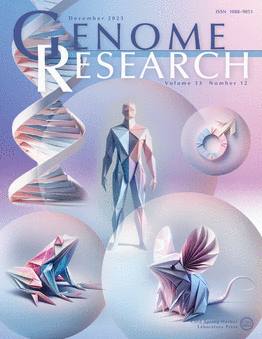ONT R10.4.1长读测序对三种主要呼吸道细菌病原体的准确基因分型
IF 5.5
2区 生物学
Q1 BIOCHEMISTRY & MOLECULAR BIOLOGY
引用次数: 0
摘要
高通量大规模平行测序显著改善了细菌病原体基因组学、诊断学和流行病学。尽管它的准确性很高,但短读测序在全基因组重建和染色体外元素(如质粒)的组装方面存在困难。使用牛津纳米孔技术(ONT)的长读测序提供了一种替代方案,提供了包括实时测序和成本效益在内的优势,在资源有限的情况下特别有用。然而,历史上较高的错误率的ONT数据迄今限制了其在高精度基因组分型的应用。最近发布的ONT的R10.4.1化学,显着提高了原始读取精度(Q20+),为这个问题提供了一个潜在的解决方案。本研究的目的是评估ONT最新化学方法在细菌基因组分型方面与金标准Illumina技术的性能,重点关注三种具有公共卫生重要性的呼吸道病原体,即肺炎克雷伯菌、百日咳博德泰拉和白喉链杆菌及其相关物种。利用快速条形码试剂盒V14,在不同的模拟覆盖深度下,我们生成并分析了不同碱基调用模型的基因组组合。将ONT序列与Illumina参考序列进行完整性和核心基因组多位点序列分型(cgMLST)准确性(等位基因错配数)的比较。我们的研究结果表明,使用Dorado SUP v0.9.0的原始ONT数据库获得的基因组,用Flye组装,最小覆盖深度为35倍,对所有被测细菌物种都具有最佳的准确性。每种cgMLST方案的错误率始终低于0.5%,表明ONT R10.4.1数据适合用于疫情调查和公共卫生监测的高分辨率基因组分型。本文章由计算机程序翻译,如有差异,请以英文原文为准。
Accurate genotyping of three major respiratory bacterial pathogens with ONT R10.4.1 long-read sequencing
High-throughput massive parallel sequencing has significantly improved bacterial pathogen genomics, diagnostics, and epidemiology. Despite its high accuracy, short-read sequencing struggles with complete genome reconstruction and assembly of extrachromosomal elements such as plasmids. Long-read sequencing with Oxford Nanopore Technologies (ONT) presents an alternative that offers benefits including real-time sequencing and cost-efficiency, particularly useful in resource-limited settings. However, the historically higher error rates of ONT data have so far limited its application in high-precision genomic typing. The recent release of ONT's R10.4.1 chemistry, with significantly improved raw read accuracy (Q20+), offers a potential solution to this problem. The aim of this study was to evaluate the performance of ONT's latest chemistry for bacterial genomic typing against the gold standard Illumina technology, focusing on three respiratory pathogens of public health importance, Klebsiella pneumoniae, Bordetella pertussis, and Corynebacterium diphtheriae, and their related species. Using the Rapid Barcoding Kit V14, we generated and analyzed genome assemblies with different basecalling models, at different simulated depths of coverage. ONT assemblies were compared to the Illumina reference for completeness and core genome multilocus sequence typing (cgMLST) accuracy (number of allelic mismatches). Our results show that genomes obtained from raw ONT data basecalled with Dorado SUP v0.9.0, assembled with Flye, and with a minimum coverage depth of 35×, optimized accuracy for all bacterial species tested. Error rates were consistently below 0.5% for each cgMLST scheme, indicating that ONT R10.4.1 data is suitable for high-resolution genomic typing applied to outbreak investigations and public health surveillance.
求助全文
通过发布文献求助,成功后即可免费获取论文全文。
去求助
来源期刊

Genome research
生物-生化与分子生物学
CiteScore
12.40
自引率
1.40%
发文量
140
审稿时长
6 months
期刊介绍:
Launched in 1995, Genome Research is an international, continuously published, peer-reviewed journal that focuses on research that provides novel insights into the genome biology of all organisms, including advances in genomic medicine.
Among the topics considered by the journal are genome structure and function, comparative genomics, molecular evolution, genome-scale quantitative and population genetics, proteomics, epigenomics, and systems biology. The journal also features exciting gene discoveries and reports of cutting-edge computational biology and high-throughput methodologies.
New data in these areas are published as research papers, or methods and resource reports that provide novel information on technologies or tools that will be of interest to a broad readership. Complete data sets are presented electronically on the journal''s web site where appropriate. The journal also provides Reviews, Perspectives, and Insight/Outlook articles, which present commentary on the latest advances published both here and elsewhere, placing such progress in its broader biological context.
 求助内容:
求助内容: 应助结果提醒方式:
应助结果提醒方式:


